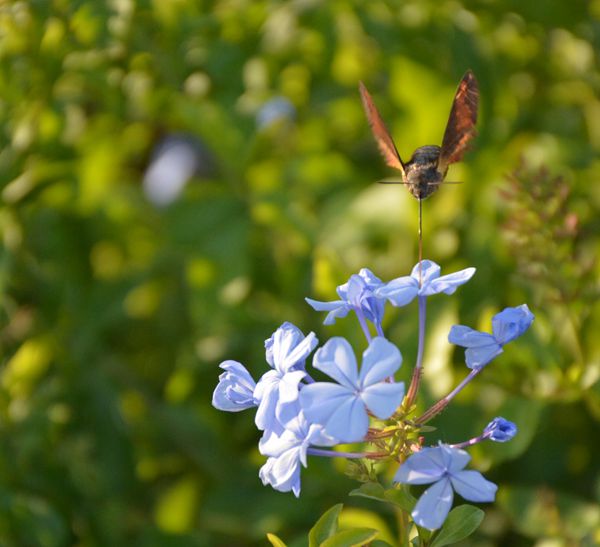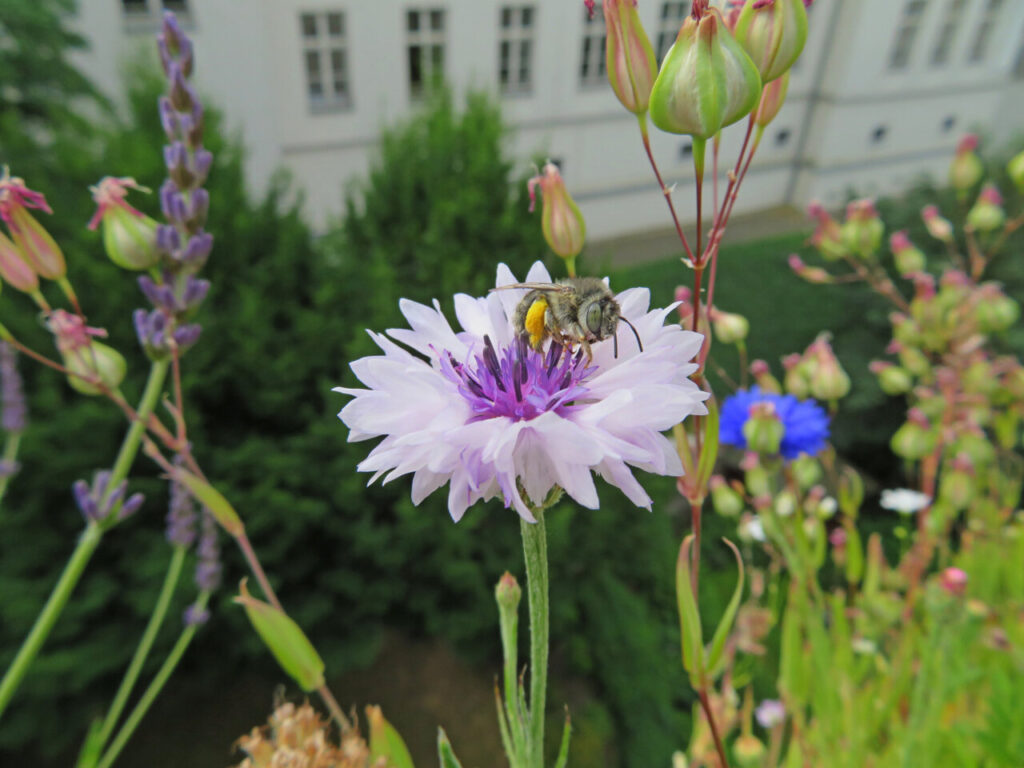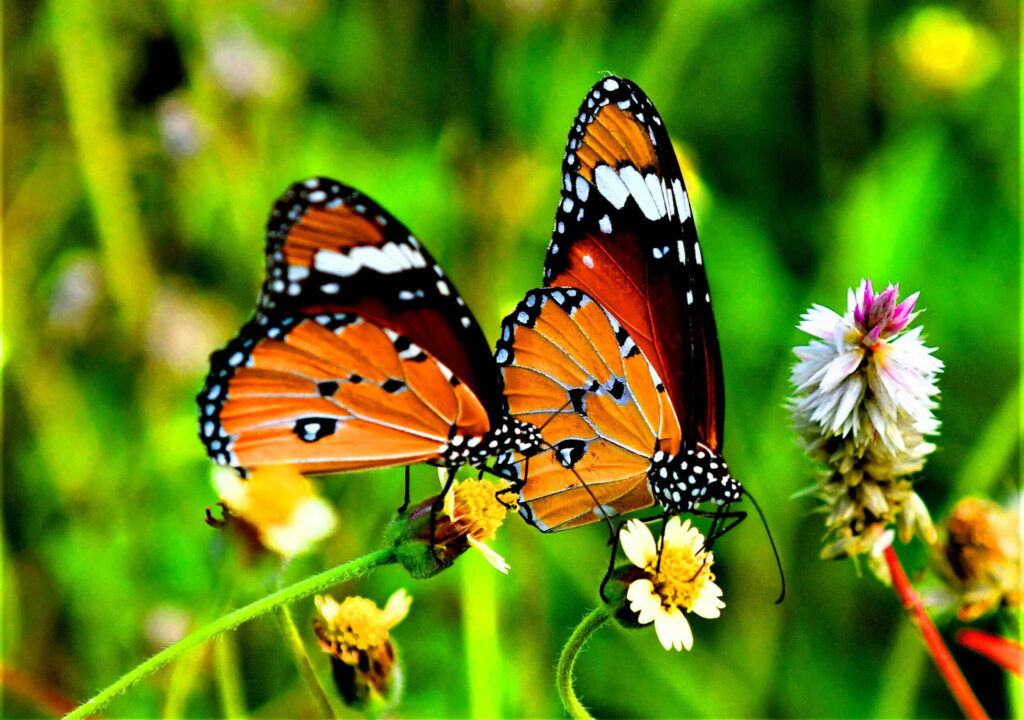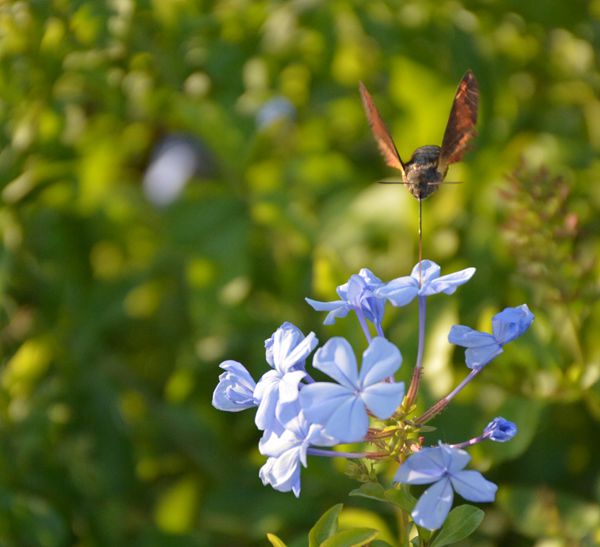
Urban growth poses a significant threat to wild bees and butterflies worldwide, as revealed by a comprehensive global analysis of pollinators in cities. The expansion of urban areas results in shrinking habitats and reduced food availability, leading to the decline of butterfly and wild bee populations. Despite this, pollination has not yet been severely affected, thanks to the compensatory efforts of honey bees. The study, which encompasses data from 133 studies, underscores the importance of implementing nature conservation measures in urban areas. Urbanization has adverse effects on the abundance and biodiversity of pollinators, with butterflies enduring the most negative impact. Pollinators relying on specific plants for nourishment and larvae development are experiencing declines due to the scarcity of suitable habitats in cities. Notably, wild bees that nest in the ground bear the brunt of the consequences, while those nesting above ground are comparatively less affected. While the decreasing number of pollinators does not immediately compromise pollination performance, the study emphasizes the necessity of designing cities with a greater variety of flowers to support pollinator populations and counterbalance the adverse effects of urban growth.
Urban Growth and its Impact on Pollinators
Shrinking habitats and decreased food availability
Urban growth is rapidly transforming natural landscapes into concrete jungles. As cities expand, natural habitats for pollinators such as bees and butterflies are shrinking at an alarming rate. The destruction of forests, meadows, and other green spaces has dire consequences for these important creatures. With the loss of their natural habitats, pollinators struggle to find suitable places to live and forage for food.
Not only are pollinators facing shrinking habitats, but they are also experiencing decreased food availability. Urbanization often replaces diverse and abundant flowering plants with manicured lawns and non-native species, which provide little or no nutrition for pollinators. This lack of suitable food sources contributes to the decline in their populations.
Decreasing abundance and biodiversity
The consequences of urban growth are evident in the decreasing abundance and biodiversity of pollinators. As their habitats shrink, the number of wild bees and butterflies declines drastically. These pollinators are essential not only for the reproduction of plants but also for maintaining the overall health and diversity of ecosystems.
The loss of pollinators threatens the delicate balance of nature. Without their contributions, we risk losing countless plant species and disrupting the intricate web of life that relies on pollination. It is crucial that we take action to protect and support these vital creatures.
Specific plants and larval development
Certain pollinators depend on specific plants for their nutrition and larval development. The destruction of their natural habitats in urban areas makes it increasingly difficult for them to find these crucial resources. As a result, their populations suffer, and their role in the ecosystem diminishes.
For example, butterflies often require specific host plants for their larvae to feed on. Without these plants, the butterflies are unable to complete their life cycle, leading to population declines. Similarly, some bees rely on specific flower species for their pollen and nectar needs. When these plants disappear due to urban growth, the bees struggle to find adequate food sources, further jeopardizing their survival.
Differences between ground-nesting and above-ground-nesting bees
Not all bees are affected equally by urban growth. Ground-nesting bees, which construct their nests in the soil, are particularly vulnerable. As cities expand, the soil is covered with concrete and buildings, leaving no space for these bees to build their nests. The destruction of their nesting habitats leads to a decline in their populations.
In contrast, above-ground-nesting bees, such as the common honey bee, have adapted to urban environments more successfully. They can utilize man-made structures, such as wall cavities or artificial hives, to establish their colonies. While their populations may still be impacted by urban growth, they are generally more resilient than ground-nesting bees.
Compensation by honey bees
Although wild bees and butterflies are at risk due to urban growth, pollination itself has not yet been severely impacted. Honey bees, which are commonly managed by beekeepers, have the ability to compensate for the reduction of pollinators in urban areas. Their versatility and adaptability enable them to continue pollinating the plants that require their services.
However, it is important to note that this compensation by honey bees is not a sustainable long-term solution. Relying solely on honey bees to pollinate urban areas puts immense pressure on their populations and ignores the importance of other native pollinators. To ensure the stability of ecosystems, it is crucial to protect and support the diverse array of pollinators that exist in our cities.

This image is property of scx1.b-cdn.net.
The Risk to Wild Bees and Butterflies
Butterflies as the most negatively impacted
Among pollinators, butterflies are particularly vulnerable to the impacts of urban growth. Their delicate life cycles, which rely heavily on specific host plants, make them highly sensitive to habitat destruction. Butterflies need suitable areas for their larvae to feed and grow, as well as abundant nectar sources for adult butterflies to sustain themselves.
The loss of natural habitat in urban areas drastically reduces the availability of these essential resources for butterflies. Without access to suitable host plants and nectar-rich flowers, their populations decline rapidly. The disappearance of once-common butterfly species is a concerning trend that highlights the urgent need for conservation measures.
Wild bees and ground-nesting bees
Wild bees, like butterflies, face numerous challenges in urban environments. The destruction of their natural habitats, including meadows, woodlands, and even roadside verges, disrupts their vital life processes. These bees typically rely on specific plants for their pollen and nectar requirements, making it crucial for them to access diverse and abundant flowering resources.
Among wild bees, ground-nesting species are particularly affected by urban growth. With the loss of suitable soil habitats, these bees struggle to find places to construct their nests and rear their young. This puts their populations at great risk and reduces their ability to contribute to pollination in urban areas.
Less impact on above-ground-nesting bees
In contrast to ground-nesting bees, above-ground-nesting species are generally less affected by urban growth. Bees such as honey bees, which are commonly managed by beekeepers, can adapt to and thrive in urban environments. Their ability to construct hives within artificial structures like buildings or bee boxes allows them to continue their activities despite the loss of natural nesting habitats.
While above-ground-nesting bees still face challenges in urban areas, such as the availability of suitable food sources, they are generally more resilient. Their adaptability provides some degree of compensation for the decline of ground-nesting bees and other pollinators. However, it is important to remember that a diverse and healthy pollinator community is vital for the long-term stability of ecosystems.

This image is property of scx2.b-cdn.net.
The Importance of Nature Conservation Measures
Findings from 133 studies
A comprehensive analysis of pollinators in cities, incorporating data from 133 studies, underscores the importance of nature conservation measures. The research reveals the significant impacts of urban growth on the abundance and biodiversity of pollinators. Executing measures to mitigate these negative effects is crucial to safeguard the health of urban ecosystems.
Conservation measures in urban areas
Implementing effective nature conservation measures in urban areas is key to supporting pollinator populations. Preserving and creating green spaces that mimic natural habitats can provide much-needed resources for pollinators. Strategies such as planting native flowering plants, establishing wildflower meadows, and incorporating green roofs and walls into buildings can contribute to the conservation of pollinator biodiversity.
Furthermore, reducing the use of pesticides and promoting organic gardening practices are essential steps towards creating pollinator-friendly environments. Educating and raising awareness among urban dwellers about the importance of pollinators can also foster a sense of stewardship and encourage sustainable practices within cities.
Designing cities with diverse flowers
One crucial consideration when designing cities is the incorporation of diverse and abundant flowers. By selecting a wide range of plant species that bloom at different times throughout the year, we can provide sustenance for pollinators year-round. This approach ensures a continuous supply of pollen and nectar, allowing pollinators to thrive and contribute to the health and productivity of urban ecosystems.
Additionally, creating corridors of interconnected green spaces and pollinator-friendly habitats can facilitate the movement of pollinators throughout the city. These green corridors act as a path for foraging and nesting, enhancing the connectivity of pollinator populations.

This image is property of www.farmingportal.co.za.
Pollination Performance and Honey Bees
No immediate impact on pollination
Despite the decline in wild bees and butterflies due to urban growth, pollination performance has not yet been significantly impacted. This can be attributed to the compensatory efforts of honey bees, which are capable of fulfilling the pollination needs of many plant species. Their efficiency and adaptability in urban environments enable them to effectively transfer pollen from flower to flower.
Compensation by honey bees
honey bees are highly adaptable and can thrive in various environments, including urban areas. Beekeepers strategically manage honey bee colonies, ensuring their availability for pollination services in agricultural and urban settings. These managed honey bees compensate for the reduction of wild pollinators and help ensure the continued production of fruits, vegetables, and other crops that rely on pollination.
However, it is important to recognize that heavy reliance on honey bees as the sole pollinators in urban areas is not a sustainable solution. Diversifying and supporting the broader community of pollinators is essential for the long-term stability and resilience of ecosystems.
Implications for ecosystem functioning
While honey bees may provide temporary compensation for the decline of wild pollinators in urban areas, their exclusive presence can have implications for ecosystem functioning. The loss of species diversity among pollinators hampers the ability of ecosystems to adapt to changing environmental conditions and respond to disturbances.
A healthy and diverse community of pollinators ensures the stability and resilience of ecosystems. It is crucial to preserve and support the entire spectrum of pollinators, each with its unique set of adaptations and contributions, to maintain the intricate web of life that relies on pollination.

This image is property of english.cas.cn.
Mitigating the Negative Effects of Urban Growth
Diverse flower planting as a solution
One of the key strategies for mitigating the negative effects of urban growth on pollinators is the planting of diverse flowers. By incorporating a wide range of flowering plants, with varying bloom times and attractivity to different pollinators, cities can provide year-round food sources for these vital creatures.
Planting native species is particularly important as they have co-evolved with local pollinators, ensuring a strong ecological connection. Native plants generally require less maintenance and are better adapted to local climate conditions, making them ideal choices for urban landscapes.
Supporting urban pollinator populations
To support pollinator populations in urban areas, it is crucial to create suitable habitats and provide the necessary resources for their survival. This includes incorporating nesting sites such as bee boxes and bumblebee houses, providing sources of water, and minimizing the use of pesticides.
Engaging in citizen science initiatives and community-led efforts can also be highly impactful in supporting urban pollinators. These initiatives may involve creating pollinator gardens, participating in pollinator monitoring programs, and spreading awareness about the importance of pollinator conservation.
Creating suitable habitats in cities
In addition to planting diverse flowers and supporting pollinator populations, creating suitable habitats within cities is of utmost importance. This can be achieved through various measures, such as designing green roofs and walls, preserving and creating green spaces, and establishing wildlife-friendly corridors.
By integrating nature into the urban landscape, we can create havens for pollinators amidst the concrete jungle. These habitats not only benefit pollinators but also enhance the aesthetic appeal of cities, improve air quality, and provide spaces for people to connect with nature.
In conclusion, urban growth poses a significant threat to pollinators, particularly wild bees and butterflies. The destruction of their natural habitats and the loss of food sources jeopardize their populations and the crucial role they play in ecosystem functioning. However, pollination itself has not yet been severely impacted, thanks to the compensatory efforts of honey bees.
To mitigate the negative effects of urban growth, it is essential to implement nature conservation measures, create pollinator-friendly habitats, and plant diverse flowers. Supporting and preserving the entire community of pollinators is crucial for maintaining the health and stability of urban ecosystems. By valuing and prioritizing the well-being of these important creatures, we can ensure mutual prosperity for both humans and pollinators in our urban landscapes.

This image is property of cff2.earth.com.